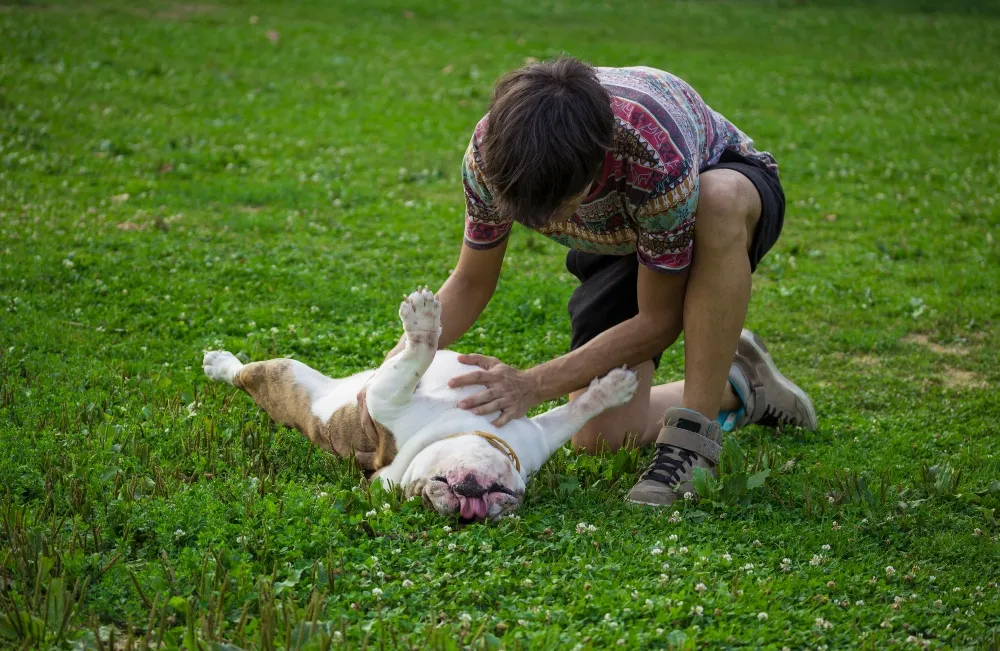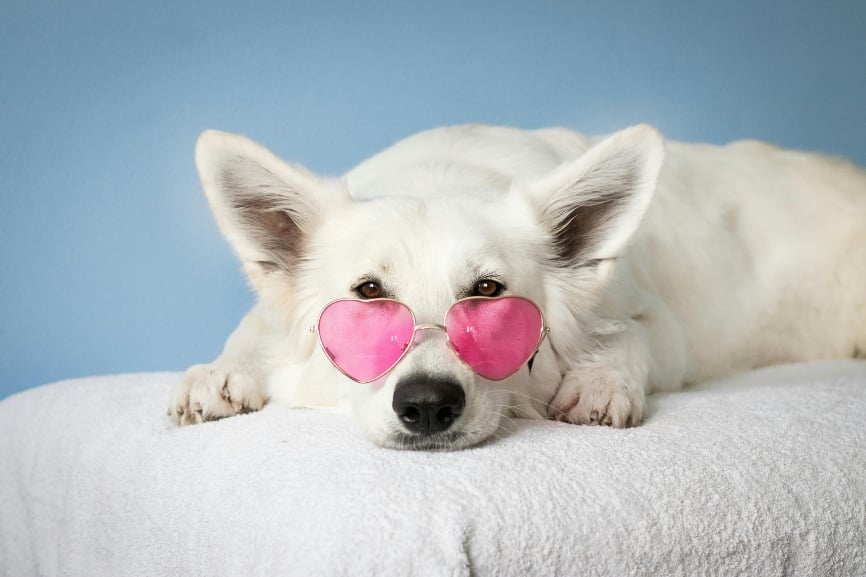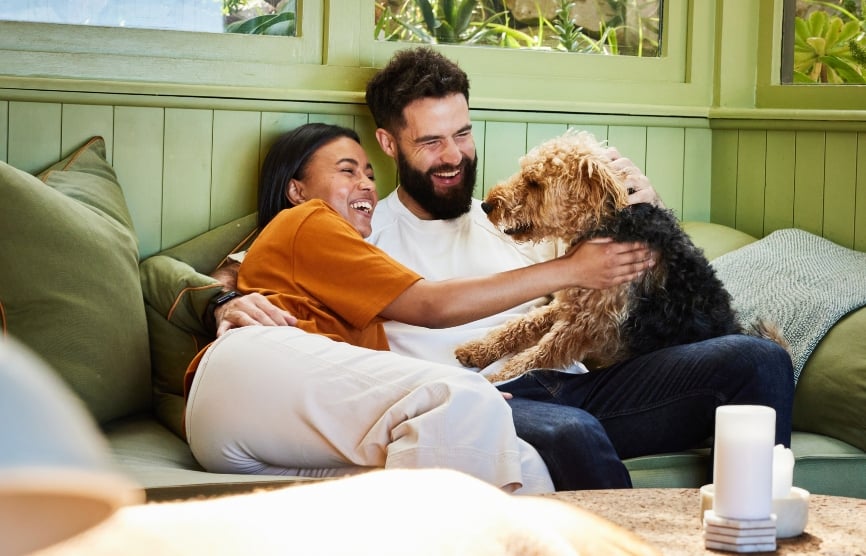Table of Contents
Some dogs are simply crazy for belly rubs. As soon as you, or any other favorite human starts petting them (or sometimes even batting an eye in their general direction!), they instantly flop onto the floor and roll over to expose their belly for rubs. But what makes this particular spot so appealing to dogs?
Why dogs love belly rubs
It’s quite simple, actually. Dogs love belly rubs for the same reason they love receiving scritches and pets: because they feel good!
When a dog rolls over to expose their belly with happy body language signals, such as a wagging tail and relaxed posture, it’s a way for them to communicate that they trust you. If they roll further onto their back as you begin to rub their belly, it’s typically an open invitation to keep going.
- Exposing their belly is a form of trust and vulnerability. When a dog rolls over and exposes their belly to you, it is a sign that they are comfortable and that they trust you. By rubbing their belly, you reinforce this trust and strengthen the bond between the two of you.
- The belly area is sensitive. Gentle rubs and scratches in this sensitive area can feel pleasurable to a dog.
- Dogs enjoy receiving attention and affection. What dog doesn’t love getting positive attention from a human? Belly rubs are a great way to make a dog feel good because you are giving them love and attention.
- It can provide a physical and emotional release. Belly rubs can be soothing for dogs, both physically and emotionally. Just like humans, dogs can experience stress or tension, and gentle belly rubs can help alleviate these feelings. It can also promote relaxation and a sense of well-being for the dog.
Not all dogs love belly rubs
For some dogs, rolling onto their backs and exposing their belly to a human is a sign of submission. If a dog shows signs of nervousness, such as a tucked tail, ears back, slightly tense posture, and lip licking, then you shouldn’t make the assumption that his belly display is an invitation for rubs. In situations with shy or intimidated dogs, move slowly, get low, and give them a little space to approach you first.
If your dog doesn’t like belly rubs in general, then don’t force it. Some dogs may prefer to be pet on their head or back rather than their belly. Others may eventually come to love belly rubs, but need some time to develop a level of comfort and trust.
For dogs that usually love belly rubs but uncharacteristically become sensitive or protective of the area, it could be a sign of a medical condition. Any unusual changes in behavior like this should be brought to your vet’s attention, as it could be a sign of something more serious.
Of course, there are many other ways to show your dog love and affection, too, such as quality play or cuddle time, walks, and homemade treats.








